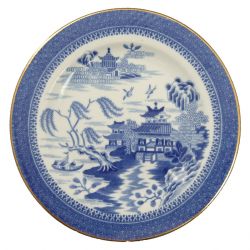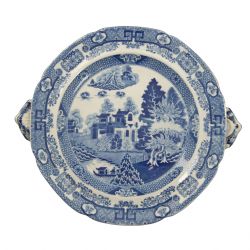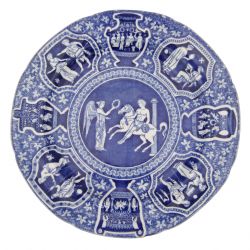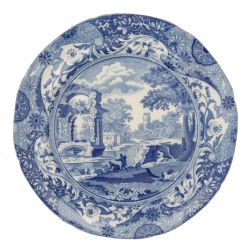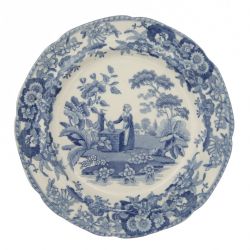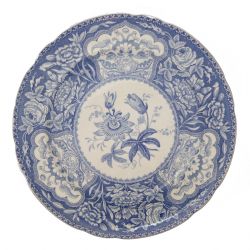- History
- Pottery
- Industry
Spode and Underglaze Blue
|
From the very first, Spode’s printed pottery exhibited an accomplished artistry, due in part to his skilled engraver Thomas Lucas. Lucas trained under Thomas Turner at the Caughley porcelain factory in Shropshire before moving, with his printer, Richards, to the Spode factory in 1783. A second Caughley-trained engraver Thomas Minton moved to London to partner with his brother in a retail china shop. In London he engraved patterns for the pottery trade, including Josiah Spode. Minton moved from London to Staffordshire in 1792 to be closer to his customers until in 1796 he established his own factory in partnership with Joseph Poulson. Caughley-trained engravers would have contributed expertise in the art of underglaze printing on porcelain and intimate familiarity with designs in the Chinese taste. To recreate these products in earthenware Spode had to adapt the process, creating a more flexible paper for the printing process and developing a glaze recipe that brought the color of the black-blue cobalt to a brilliant blue perfection. This combination of technology and artistic talent had Spode producing the first underglaze blue-printed earthenware in Stoke-upon-Trent by 1785. The Chinese-style blue printed patterns such as “Buffalo” and “Mandarin” of the 1780s, “Willow” and “Forest Landscape” of the 1790s gradually gave way to new fashions. In 1806 Spode introduced both “Bamboo” and “Greek” patterns. By the 1810s western topographical views were also popular – “Rome” appeared in 1811, “Indian Sporting” by 1815 and “Blue Italian” in 1816. Pottery fashions constantly change. Many of those new designs last only a few years, but several of the patterns Josiah Spode I and II introduced remained popular into the present century. |
|

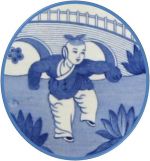 Josiah Spode I was the first potter to commercially produce underglaze blue printed earthenware. Most historians believe he used methods developed by
Josiah Spode I was the first potter to commercially produce underglaze blue printed earthenware. Most historians believe he used methods developed by 


